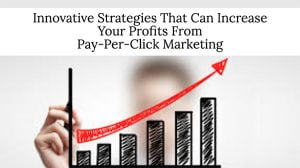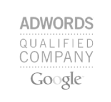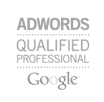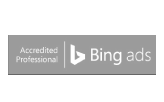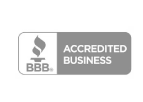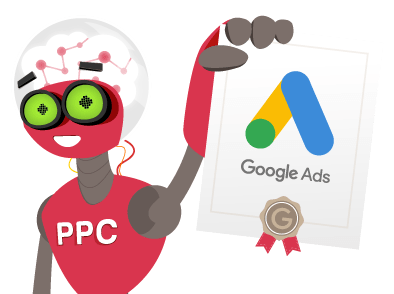Every Client Matters. A Lot.
PPC marketing can be scary for any business owner for obvious reasons: it can get costly when handled carelessly. Ineffective clicks are known to cut into the company’s bottom line significantly. However, once you know what you’re doing, it’s a lot like playing a game – and the more you play, the more rewarding (and fun) it becomes.
Every new client will help facilitate your next opportunity, realization, and skill. It won’t be long before you’re writing up a guide of your own.
So Before You Read This Guide
Below, you’ll find details on a campaign where we were able to increase a client’s PPC revenue by 5x in just three months. We plan on emulating this approach on future projects (as we’ve already been doing with excellent results), and we hope that the details will be useful to folks beyond our team. However, it’s important to note that every client is different, a unique approach may be your best bet depending on the niche or industry, and some brands are, frankly, innately easier to sell than others. So enjoy this guide, but don’t use it as a manual.
Instead, use this as inspiration and insight as you continue your PPC path to greatness. We believe in you.
Also: we believe that it’s important to know the history and background of the account in question, as well as how we operate and approach optimization.
Otherwise, let’s talk about the service-oriented client that led to the title of this article.

The Client
Ah, clients: love to have them, hate having to deal with them. Just kidding! Some clients are great, this one especially.
How the Account Was Acquired
After our clients’ digital agency dropped the ball and plummeted their sales and revenue, the client was sent our way on referral. Their expectations were low. Their frustration was sky high. They were jaded about digital marketing.
Their Specific Niche
This client is a fitness and health-focused, service-oriented business with a growing monthly client base. Their marketing also needed to be very geographically targeted, as their offerings are only accessible in a few cities.
Our 3 Core Principles, No Matter the Client
Before I delve deep into the actual deliverables, here’s how we approach clients and build relationships. We call it, “Our 3 Core Principles.” You have our permission to call it, “My 3 Core Principles.”
Principle 1: Be Transparent

Everything we do is recorded and noted using a project management system, which clients can access in full, which means they can track everyday tasks, monthly reports, and any minor optimizations we perform.
I’m sure that your entrepreneurial intuition has already come up with two red flags with that approach. For one, the client might hammer you with questions or clarifications all the time. However, and perhaps more importantly, they could see what you’re doing and eventually do it themselves. Both sensible worries, both mitigated when you set expectations.
Principle 2: Set Expectations

Overpromising will come back to bite you, at least eventually. Don’t do it. Although, you don’t want to be vague, either. You still need to sell them on your expertise, as well as solidify your place as their go-to PPC guru. The solution? Create a pricing and timing structure, complete with tasks, timelines, and the projects scoped out in the simplest terms.
For example, you could expect weekly optimizations on specific days of the week, or reporting that includes detailed information that’s delivered at the same time each month. It’s a good amount of upfront work, but it will be worth it in the long run and get easier as you keep doing it.
It’s also important to remember to be honest and unbiased in your conversations with the client. Get straight to the point and don’t be afraid of expressing your point of view. Saying yes to everything the client asks and agreeing with everything they say will undo that work you did landing the client in the first place: positioning yourself as an expert.
Is it possible that declining an idea could cost you what would have otherwise been additional income? Sure, but that’s better than hurting your client’s bottom line, which is what happens when you go forward with bad ideas. Once the client sees the red numbers, they’re not going to care whose idea it was. Instead, they’re going to look at who’s responsible. You’re the expert. In the end, you’re responsible, which is why it’s so important to take control in the beginning.
Then, when your ideas start paying off for the client, they only have one person to thank: you, the confident expert they can be confident in hiring again…and again.
Principle 3: Keep the Discussions Open

What is your target Cost-Per-Action (CPA)? What is your current revenue from the account? This should all be in the reports, but it’s always good to verify. You should also ask questions about…
- Trends in the niche, which can be backed up using Google Trends.
- Insider knowledge that they know from direct experience, through industry contacts, or by virtue of being in the business for years.
Before we even begin to optimize a client’s account, we ask those questions, then back up the answers with copious amounts of research. Here are the summaries of our most important findings for this client:
Account’s Overall Sales Channels: Over 85% of their sales come through PPC, with the other 15% from referral traffic and branded search (which is technically being generated by PPC, but we’ll get to that later).
AdWords History: Account had been running for the past three years with a budget that varied between $8,000 to $20,000 per month.
Analytics & Conversion Tracking: They were using a basic analytics and tracking setup through Google Analytics. No goal tracking, no funnel tracking, no demographics, and 20+ other useful features were not enabled. They were also tracking anything and everything as a conversion in AdWords on top of other distinct issues with the data.
CPA & Financial Objectives: Based on the numbers they provided us, the CPA (Cost Per Acquisition) seemed reasonable and their margins were healthy, so our research indicated that their AdWords account would have great success. For a small number of companies, search campaigns can prove to be too expensive.
Tools Used: The client was using Google Analytics, AdWords, Unbounce for landing pages and Olark for live chat, and DialogTech (called IfByPhone at the time) for call tracking.
CRO Point of View: The website had a lot of dead ends, meaning you could navigate all the way until there are no more places to click and still not know what they offered or how to take advantage of it. Forcing a potential customer to put in an effort to give you their money is a good way for them to go elsewhere.
Pricing Structure: They had a proper pricing structure with healthy margins, and the person in charge had extensive knowledge of their industry. (Not as uncommon as one might think.)
Reporting: The setup of the overall sales and revenue reports met best practices. You could see everything, from cost/sale to cost/lead to lead-to-sale ratio. However, no reporting was set up at a channel level, so there was no way to know which ad was working best, what landing page was converting the highest, and so on.
Get Your Forks and Knives Out: It’s Time for the Meat.

Before starting any optimization or work, we do a series of audits of an account. And not just their AdWords account, but an overall examination of their website and competition as well. So step one after getting the client is always going to be:
Research, Audits, Then More Research and Audits

It’s impossible to stress enough how much research is needed to get you started down the right path, and existing accounts will require far more research time than new accounts, as you have to compile all your outside research as well as audit everything that led their marketing efforts to your door.
For example, the summaries above were made extremely concise for this article. When we finished the research component for this client, we sent them a report with over fifty slides, because they had to know what to expect at every level.
You’re on the same page with your client when they know precisely how much work needs doing and why.
Let’s be honest; it’s also to showcase how extensively we prepared we are before implementing the PPC campaign. Clients like preparedness, and they want someone willing to go above and beyond.

After the research, I assigned each job and project to a team member. A project management tool was set up to track and notarize activities. (Trello is a great tool for that!)

Seems simple enough right? It is! But boy, is it time-consuming: for each project created, we had to create tasks, and for each one, we had a checklist of items to cover and get done. It is, however, incredibly worthwhile because once it’s all set up, it’s a breeze to keep track of everything, for you and the client.
Overview of Audits Performed
Fifty slides is a lot of room for information, but we needed all of it. Here are the different audits we conducted to compile all that info.
Competition
Let’s get this one out of the way now: I have an entire course on this called Competitive Tools: How To Beat Your Competitors, as it’s too uniquely specialized to merit inclusion here. If you’re unfamiliar, give it a go!
Already familiar? Then give SEMRush a try (its linked via my affiliate link), an exceptional PPC, SEO and competitive analysis tool that I could not recommend enough.
Conversion Tracking
This particular client had some good of tracking in place, but it seemed to be completely screwed up and not working accurately, and they were monitoring anything and everything. Too much of a mess, so we started from scratch.
Purchases (and only purchases) make up the base metric of what we’ll use to optimize the account. You might be thinking, “What about signups, Click-to-Chat, and email form submissions?” While we do track those as well and recommend you do the same, we’re trying to optimize the account based on one metric, as there are simply too many to be able to optimize them all. Instead, use the others as secondary (or supporting) metrics.
In AdWords conversion tracking (as of 2018), you have the option to track conversions, as well as which ones show up in the report.

In our case, we set up all the different conversion points: Purchase, Signup, Click-to-Chat, Email Submit, Landing Page Submit, and Calls. But we only had purchases to report within the AdWords live dashboard/platform. We are still tracking the others and can see their data in AdWords if we wanted to, but they were not reporting in the main dashboard where we do most of the optimizations.
Quick Summary
In this section of the campaign, we were optimizing for Purchases, but we also looked at all the other conversions to support any optimizations when we had doubts about ad groups, keywords, ads, and the like.
It should go without saying, but it’s an absolute must to test your tracking and analytics setup before moving to the second point.
Mining AdWords and Google Analytics Reports
By “mine,” I mean we went in, set up reports and all kinds of different segments, and started to look at all the data to find insights.
By looking at these reports with Google Analytics, we can figure out the buying cycle and see if there’s any data we can use within AdWords. What we found was incredible: one of the most popular paths people are taking to purchase…
…required interacting with a PPC ad at least twice!

Here is the Google Analytics screenshot to confirm

This report revealed two key things: that this is a hyper-competitive market, and users frequently shop around before purchasing. So we had to make sure that all of our ads had consistent messaging and made sense at every touchpoint—while still using different imagery, messaging, and so on at the different touch points—to increase the chances a user converts.
To show ads consistently and frequently, you have to make sure that your impression/search shares are high. The impression/search shares are the number of impressions (views) you received versus the amount possible. Unfortunately, budget and bids are usually the culprits here.
AdWords has a way for you to check for impression/search shares. Go to Campaigns –> Modify Columns –> Competitive Metrics. Then check all. It will look something like this:

Explaining that to the client boosted their confidence in our abilities, and I don’t think they ever doubted our abilities after that.
Tools Audit: What are they using?
From our extensive experience in the industry and thousands of hours of customer-base use, we know which tools are best, most reasonably priced, and provide exactly what the client requires. Here are the tools we recommend and a quick summary of each, with the option to read more about each one if you so choose.
The client originally had IfByPhone (now called DialogTech). We recommended CallRail, as they offer the same systems but with an easier interface and a far lower price, not to mention fantastic customer support.
When we came on board, they were using ZenChat, so we switched them to Intercom. Their interface and support are great, and while it’s a little pricey, it’s worth it if the potential clients are likely to have plenty of questions.
For landing pages, we love ClickFunnels, UnBounce, Optimizely, and you can use Google Analytics experiments to test your landing pages for free too.
For reporting, we use Supermetrics (my affiliate link) and Google Data Studio, because nothing beats automated reports that both look good and help the client easily understand what their money is doing.
AdWords Audit: How Optimized Is Their Account?
It may be the most fun, but the AdWords Audit is the most time intensive and detailed part of the job, and since we got handed over what someone else had built, we had to look at every single aspect of the account.
First Things First
We start with how the campaigns are structured. In this instance, it was by landing pages and days of the week. This is a deprecated method since Google added in bid adjustment controls a few years back, making it easier for users to segment everything within one campaign.
Ad Groups
After the structure of the campaigns, we looked at how they grouped the keywords. Some things we noticed included…
- How so many ad groups had plenty of keywords while others had very few.
- The fact that the quality scores of keywords were anywhere from 3 to 8 within the Ad Groups. We always recommend quarantining the low-scoring keywords into separate ad groups.
- How there were anywhere from 10 to 50 keywords within one ad group, an improper use of match types. See below:

Keywords
More specifically, the negative keywords. In my opinion, negative keywords are the backbone of any successful PPC campaign, and I enjoy researching them first before going after positive keywords. Once you identify negative keywords, you can add them at the campaign or ad group level. By doing so, we found discrepancies between the negative keywords in the campaigns and positive keywords they were targeting, which were blocking relevant searches and killing the impression/search shares.
Little to no ad group level negatives? Huh? I use those plenty!
More importantly, you need to make sure your ad groups are not competing with each other, and the same goes for campaigns. This is why negative keywords are so important. (I really can’t emphasize this enough.)

The Ads/Creative
With Adwords, there are always new updates and features, especially when it comes to creative, and what is allowed or not allowed has changed drastically over the years.
For example, you now have two headlines; before, it was only one with two description lines. Even the character limits have changed. They also added a lot of different ad types, which are, as of June 2018:
- Text (for search/keyword bidding)
- Responsive (for display)
- Image (for display)
- App Promotion Ads
- Video (for display)
- Showcase Shopping Ads (specific to Google Shopping Network)
- Call-Only Ads (for local stores)
Find them explained in detail here!
Understanding the Data
At this point, we had looked at the campaigns, ads, keywords, structure, and so on, but nothing had actually been done. To fix the account, we now had to understand the data behind this setup.
Even though this was handed to us by a third-party, we operate under the assumption that they did some due diligence when setting up the account. For this reason, we exported the entire report and started looking at each part separately, starting with campaigns.
Which campaigns are performing best? What settings are they using? Is it the keywords, landing pages, or ads within the campaign that are doing so well?
Next, we ask which ad group is performing best? What settings are they using? Is it the keywords, landing pages, or ads within the ad group? See how the questions are similar?
Now rinse and repeat for keywords and ads, and every time you answer those questions, you’ll both widen your understanding and narrow down your approach.
Once finished, take that data and save it in an Excel sheet so you can come back to it when you’re actually optimizing the account later on.
After this process, it became crystal clear what was working and what wasn’t. However, that doesn’t mean we can go into the live account and update the crap out of it. Not quite yet.
Chill out! ooosaahh.

We had good reasons to transition the account into the new structure rather than drastically implement every change immediately:
- The client was still getting leads—not at their required CPA, but they were coming in— and significant modifications might cause that to stop.
- The chances of something going wrong increases significantly when you upload 500+ changes to an Adwords account when compared to slow transitions/changes.
- Google looks at historical data, then scores account, ad groups, ads, and keywords accordingly. Upload new things, and all the history will be deleted.
Always Avoid Creating New Campaigns
If you don’t have to start a campaign from scratch, update the existing campaigns with the new settings, ad groups, ads, keywords, and so on. That way, you won’t lose the campaign history, ad history, and the link, all while making sure that your new setup is optimal for the client. I wish someone had told me this sooner!
With that being said:
It’s sometimes better to start from scratch, even if you’re working with existing campaigns.
To understand whether you need to create a new account or work better in the existing one, you need to find out the QS of your account, which ranges from 1 to 10. To calculate the QS, you can add this script to your account by going to Bulk Operations –> Scripts –> + Script.
If your account’s Quality Score is higher than 6, then you’d better continue working in your existing account. If your account’s Quality Score is 5 or lower, it will be easier to get a good QS for a new account rather than trying to improve it in an existing one.
Don’t Forget About Ad Approvals
If you happen to upload new ads, you will have to make sure they get approved. If they don’t? Then you already lost time. You will need to revise and upload new ads, all while the client is getting no traffic. When we came in, our client was hundreds of clicks hourly. If we had started from scratch, all those clicks would go poof.
For ads, the best option would be to upload the new ads, wait for them to be approved, then pause the old underperforming ads once they’re underway. Don’t update the old ads, because you’ll lose their historical data (not to mention the money you spent getting said data.)
Now, who’s ready for the fun part?
It’s time for the actual optimization!
Few things get me out of bed faster than knowing I have a day of optimizing and deleting ahead of me, but I still want to get it done in the shortest amount of time while using the smallest amount of mental bandwidth possible.
Time-Saving Tips
Here are some strategies that I implement to save me time and energy no matter the PPC campaign I’m working on:
Use Excel Files + AdWords Editor: To do this, fill in a Sheet following this template, (very very simple stuff) and then upload it to Google Editor.
Download the Entire Account’s Statistics “from the beginning of time,” then sort through the data in the editor to understand it.
Use the Keyword Checker: Go to the Tools drop-down, then click “Find duplicate keywords…” It will help you compare match types and different keywords within ad groups to determine which to run.

Use Your Specific Adwords to Your Advantage: If you’re still using the old version of AdWords, use the Dimensions tab. If you have the new version, the Dimensions tab is gone, but you can use the columns filter to show customized data points for some amazing insights (see below.)

Don’t Discount the Filter: Use filters in the Google Adwords interface (shown below) to quickly find the information you need. For example, if you need to get all the search terms that brought the conversions, go to the search terms tab, then: Filter –> Create filter –> Conversions –> conversions>0. Then download that report. You’re welcome in advance.

Custom Reports in Google Analytics: This can be hugely beneficial if you need to analyze data for a website in general. For example, to understand which locations are most effective, it is not enough to see results from AdWords exclusively. You probably should be wondering what the results are from other traffic sources, or if there are any patterns – customizing the reports is a very convenient way to go about this:
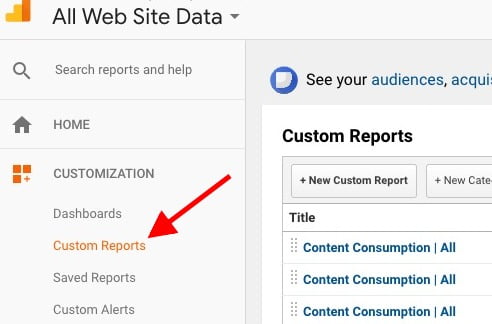
Account Structure & Client Strategy
We’ve set up just enough campaigns to make sure that we get enough traffic within the given budget. We stopped the competitor’s campaigns, as they were hemorrhaging dollars, and instead focused on the core campaigns that provide the most cost-efficient leads.
The most successful campaigns aren’t just those with the most conversions, but rather the highest conversion rates. Don’t make the mistake of looking only at one metric either – you should look at the overall benefit of a campaign when optimizing it.
As an example, if its conversions are low but it has a high conversion rate, it’s worth it to keep it. One that’s assisting in conversions at a low cost might be worth keeping as well. It depends on the scenario, but it’s something you’ll want on your radar.
A few more considerations:
- Don’t have too many campaigns running. If it’s possible, integrate your small campaigns as ad groups within larger campaigns.
- Campaigns should have cross campaign negative keywords, but overkill on the cross-negatifying can complicate things over time. So be gentle and add in keywords most likely to reduce the competition between the campaigns.
- Stop overthinking. Don’t overthink.
- You don’t have to structure campaigns based solely on their type. You can also separate them based on your customer’s mindset or different service offerings you are promoting. Are they likely to convert at night vs. day? Maybe create separate campaigns for night vs. day.
Trial and error will be key here, as this is mostly a subjective approach from the perspective of an expert. The campaign structure that ends up working best for you and your PPC management team is always going to be best, especially when the number back it up.
How We Structured the Campaigns
There is a clear trend in the data that location has a major impact on conversions, so we separated the campaigns accordingly. It was also clear that time of day played a key role, so we set up bid modifiers to make sure the ads are seen in the most likely time periods someone would convert. You can segment the campaigns as much as you’d like but keep in mind budget. (Don’t overthink it! You can always optimize later.)
Each campaign had ad groups that were limited to 5 to 10 closely-related keywords, with all the different keyword groupings except for broad match type, which is a nightmare of a match type for the type of campaigns we set up.
Then we set up as many relevant ad extensions as possible.
We also made sure that the brand campaign, retargeting campaigns and other non-search related campaigns were set up separately. This is necessary as you need to have that traffic siloed.
How we structured our Retargeting campaigns
What Is Retargeting, You May Ask?
Retargeting—otherwise known as remarketing—helps keep your brand in front of bounced traffic after they leave your website. By utilizing cookies, brands can follow the user around the web and continue displaying their ads.
Why Does Retargeting Work?
Yep. As good as liam neeson in taken.
Retargeting cultivating a sense of trust with potential customers, as they end up seeing your company’s ads pop up everywhere they go on the web. Facebook, Pinterest, Google Display Network, Google Search, Youtube, and plenty more.

In fact, it’s so valuable that I created a 3-hour course about it. I go in-depth, I give away tried-and-true methods exclusive to those who sign up for it. Want to learn how to set up remarketing campaigns that actually improve conversions? Get my Ultimate Guide to Retargeting.
How We Approached Bidding
With bidding (depending on how much account history you have), it’s best to use the Target CPA or even ROAS option, but you need to have plenty of data—and accurate data for that matter—for those to work. That’s why this method is best for ecommerce stores. I like to do enhanced CPC, but you will need data in the account for that as well (not as much as you need for target CPA/ROAS, though!)

Manual CPC is also a good and very underrated method; contrary to what most people think, you don’t have to be in your account all day long. When I combined Manual CPC with Automated Rules, I saw great results on this account and plenty of others.
Doubling Down on the Keyword Emphasis
As already mentioned, I like to start by collecting as many negative keywords as possible. I do this by going to the Google keyword tool and typing in general keywords that I’m targeting. All those keywords are likely to provide unuseful traffic that’s added as phrase negatives.
Money Saving Tip: The more negatives you have, the less unhelpful traffic you get! This means that starting out with a ton of negatives is key to a successful with PPC.
Grouping keywords is also important; and the more relevant, the better. I prefer to simplify things and have as many as possible within one ad group. However, it is recommended to have everything as separate as possible. (It pretty much all depends on how much time you have to optimize!)
Elevating the Landing Pages
We used a landing page for each campaign and constantly looked to expand to more. Their designs are tested continuously, and using Unbounce, Optimizely, ClickFunnels, even building them with WordPress with Google Experiments, they’re all great ways to create landing pages that convert.
Put Simply: A landing page should clearly represent what’s being offered and must be optimized for both Mobile and Desktop.
Other Neat Tricks
In Adwords Editor, there is an option to filter by duplicate keywords. This shows you if you have duplicates (match types included) within your account, and you can even see the data for each one right next to them. Boom. Just turn off the bad and stay with the good.
I’ve also found it very beneficial to set up Google Alerts to monitor traffic changes both day-to-day and week-to-week. For example, setting up an alert that emails you when brand traffic drops by 50% from the last day. The possibilities are endless, but you’ll discover alert options that you’ll be shocked you were going without for so long.
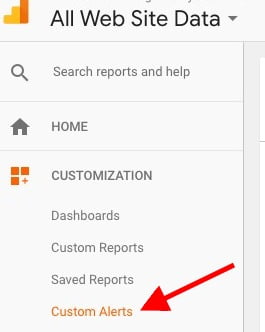
You should also keep notes and mark optimization using Google Annotations in case you need to check again. Alternatively, you can rely on change history, but for the more poignant areas, nothing beats an annotation. Tragically, it may be the most underused feature in Analytics. Let’s change that.
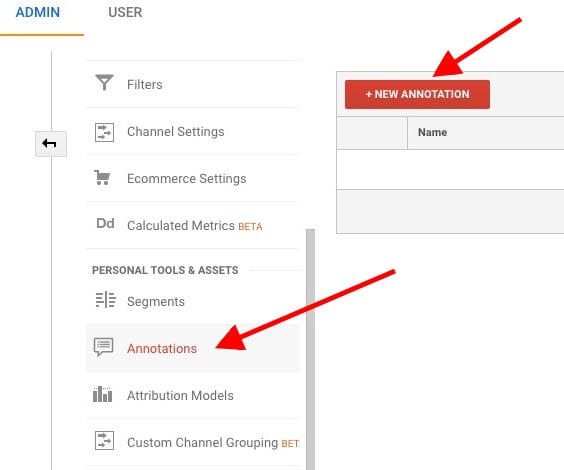
You can also set up retargeting campaigns in combination with frequency settings. It will maximize your impact!
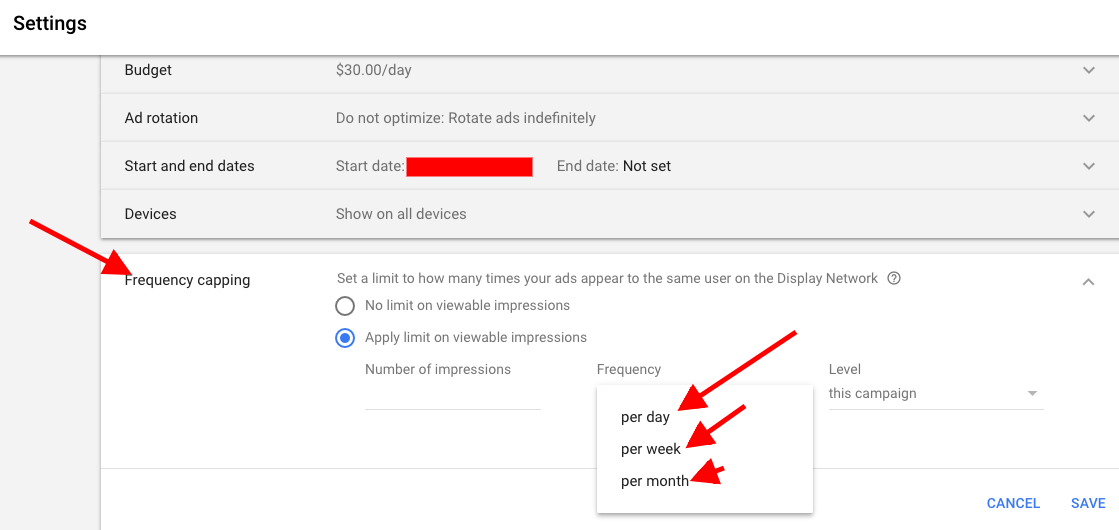
What Can You Expect in the End?
We work hard so that our clients can succeed. Their success truly is our success, because there is always room for expansion when it comes to PPC. So what can you expect from following the above and/or taking my courses?
Better results, more money, and happier clients, as showcased in the screenshot below of my monthly progress with this company’s

Notice how things started to change almost immediately when we went in and implemented the tried-and-true methods that make for a well-executed PPC. Those are the short-term results that make PPC so exciting, and they are results we should continue to enjoy by way of active and ongoing PPC management.
The PPC/SEO Combo
This case study is about PPC, which is not only a personal passion that I believe gets overlooked all too often in favor of SEO, but you also (almost certainly) you won’t see a 5x ROI improvement in that short of a timeframe using SEO. That’s a PPC stat through and through.
However, you might see a 20x+ increase through SEO within a year’s time, which is even more incredible. How do I know? I’ve seen it firsthand.
This is why my long-term goal will always be to transition clients and their businesses to drive traffic to their site through SEO. It should be every website’s ultimate mission because continuing to attract new business even when resources are diverted away from paid advertising is essentially free marketing.
As already mentioned, SEO best practices also help PPC campaigns, and vice versa. The more a website is improved, the easier it is for customers to navigate it, the better it ranks in search engines. Imagine a visitor clicking to your site from a PPC ad, to find a suboptimal website. It could cost you the sale, which means you paid for a click for no reason. But if they click on your site and find an intuitive, optimized website? You heighten your chances of converting a customer. All the while, all those clicks improve the perception of your site’s validity, bringing you ever-closer to that coveted first page of a Google search.
Google also charges less for clicks if people enjoy clicking on the site, as it showcases the value of the brand’s offerings. This is because Google is a search engine, meaning their products—from a user perspective, mind you—are websites.
Be a good product, and you’re rewarded for it. Eventually, you’ll always be able to turn back to PPC to boost sales whenever you’d like while SEO brings in free traffic day in and day out.
What’s better than free traffic? Nothing. Not one single thing.

The Additional Beauty of AdWords
With many SEO tools, you’re able to see the keyword combinations that best apply to your niche. But with AdWords, you’re getting keywords that convert the most customers, as well as really zero in on who your specific audience is. This means that you can use the data gained from AdWords to position your SEO efforts and other marketing avenues better.
After all, if you know the language a viable customer is likeliest to respond to, you can use it everywhere, from across a billboard to inside your blog and beyond.


